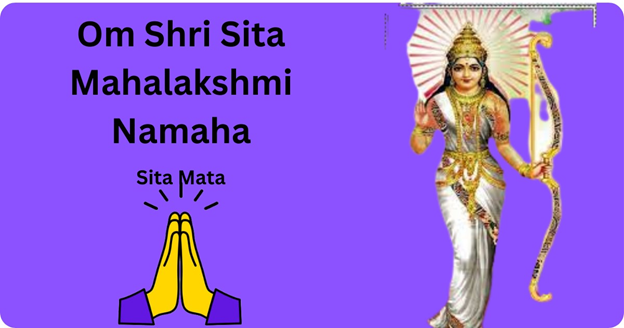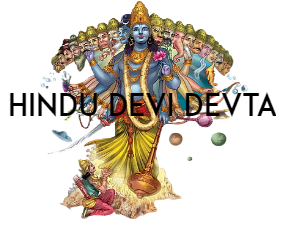Sita Mata
The story of Sita Mata’s birth, often referred to as Goddess Sita or Janaki, is one of heavenly favour and good fortune. Hindu mythology holds that Sita was created as a manifestation of the goddess Lakshmi, who is Lord Vishnu’s celestial wife. Her birth is an important moment in the epic Ramayana, in which she is a key character and Lord Ram’s bride.
The birth of Sita is credited to a divine favor given to Mithila’s King Janaka. King Janaka was a good and moral leader who was renowned for his fervent devotion and piety. He found a golden coffin hidden in the ground while tilling a field. He was shocked to discover a stunning baby girl inside the casket.
Story of Sita Mata about her birth
A fascinating story with origins in Hindu mythology and the epic Ramayana is that of Sita Mata’s birth, also known as Goddess Sita or Janaki. Millions of believers throughout the world are still inspired by this tale of divine intervention and the course of destiny.
Ancient texts claim that Sita was born as a manifestation of Goddess Lakshmi, Lord Vishnu’s celestial consort. The historic lineage of Mithila’s King Janaka, renowned for his justice, intelligence, and unwavering loyalty, is closely connected to her birth.
The traditional yagna (sacrificial ceremony) is being prepared to be performed by King Janaka as the story opens, with a field being plowed.
Much to his surprise, the fertile soil beneath the golden casket was discovered by his plough. The casket was curiously opened by the king, revealing a beautiful baby girl inside. The infant was joyfully adopted as his own, and the name Sita was given to her because he believed this to be a supernatural favor.
The high moral principles that would define Sita’s upbringing were imparted to her by King Janaka and his queen, Sunayana. Her unrivaled beauty, grace, and persistent dedication to the divine were known as she grew up, making her a shining example of virtue.
As a young woman, Sita’s fame grew rapidly and enthralled everyone who saw her. Her virtues were admired, and her wisdom and kindness came to be known and respected by the people of Mithila country.
When the decision was made by King Janaka to plan a swayamvara, a lavish celebration where suitors would compete for her hand in marriage, the plot of Sita underwent a dramatic change. Princes, monarchs, and soldiers from all around came to the swayamvara to vie for the right to wed the heavenly princess.
The turning point was reached when the suitor had to prove his might and skill by stringing Lord Shiva’s heavenly bow, an incredible accomplishment that appeared unachievable. The assembled assembly was filled with awe at the bow’s incredible power, following unsuccessful attempts by other brave princes.
At the swayamvara, Lord Ram, the heavenly manifestation of Lord Vishnu, was accompanied by his obedient brother Lakshmana amid the excitement and awe. Effortlessly, the enormous bow was raised by Lord Ram as he exuded a divine aura. Not only was the divine bow strung by him with incredible ease, but it was also broken in the process, setting off a reverberation of heavenly music and establishing his divine status.
When this amazing accomplishment was seen by Sita, Lord Ram was instantly identified as her intended spouse by her heart. A tender moment of heavenly union was shared by Lord Ram and Sita as their souls merged to recognize their enduring bond. The victor of the swayamvara was joyfully proclaimed by King Janaka to be Lord Ram, and Sita was formally reunited with her cherished Lord.
The representation of the sacred fusion of divine forces and the harmonious coexistence of the masculine and feminine sexes in the cosmos is embodied by the union of Lord Ram and Sita. Since then, their love story has evolved into a timeless ideal that is praised for the intensity of affection, mutual trust, and respect it holds.
The followers are inspired by the heavenly connection between Lord Ram and Sita, which exemplifies the fundamentals of a divine partnership based on unwavering love, selfless service, and unwavering commitment. Sita, who embodies chastity, selflessness, and steadfast faith, is regarded as a source of inspiration for both sexes and is considered an example of what a perfect marriage should be.
In the Ramayana, many hardships are experienced by Sita that put her virtue and dedication to her benefactor to the test. The epitome of unmatched fortitude, bravery, and resiliency is represented by her, as she supports Lord Ram through numerous trials, including his banishment in the wilderness and subsequent kidnapping by the demon king Ravana.
The purity of Sita’s heart, her devotion to Lord Ram, and her unflinching allegiance have inspired followers for countless centuries. Her steadfast fidelity in the face of extreme adversity and separation is a potent example of the strength of love, dedication, and divine grace.
Sita Mata’s birth and subsequent life are honored and celebrated during numerous festivals and religious ceremonies. Worshippers honor her angelic apparition and beg her blessings for a good life.
Grace, devotion, strength, and steadfast faith are traits that are exemplified by Sita Mata’s birth and divine journey. Her example serves as a timeless source of motivation, encouraging people to develop virtues and meet obstacles head-on with unshakable commitment and righteousness. Inspiring followers all around the world, Sita Mata’s celestial presence and her unwavering love for Lord Ram serve as a constant reminder of the enduring power of devotion and the ultimate triumph of goodness.

The story of Death of Sita Mata
The Death of Sita Mata
In the ancient land of Ayodhya, a tale of love, sorrow, and sacrifice unfolded—a story that would be remembered for generations to come. Sita, the beloved wife of Lord Rama, found herself at the center of this epic narrative.
After the triumphant return of Lord Rama from his fourteen-year exile, Ayodhya welcomed back its rightful heir. But the shadows of doubt cast by a cruel society lingered, questioning Sita’s purity during her captivity by the demon king Ravana. Determined to prove her innocence, Sita sought the ultimate test—a trial by fire.
In a grand ceremony, a massive pyre was lit, and Sita stepped onto it with unwavering faith. With the eyes of the kingdom upon her, she prayed to Agni, the fire god, to vindicate her virtue. To the astonishment of all, the fire did not harm her, reaffirming her purity beyond any doubt.
However, the moment of triumph turned bittersweet. Lord Rama, while relieved by Sita’s exoneration, could not overlook the shadows of suspicion that still loomed. His duty as a king and his love for Sita clashed within him. Reluctantly, he decided to banish her from Ayodhya, a decision that shattered Sita’s heart.
With tears streaming down her cheeks, Sita accepted her husband’s decree with grace. She was not one to question her lord’s judgment, even if it meant leaving the comforts of her home and the love of her life. Accompanied by her loyal caretaker, Sage Valmiki, Sita sought refuge in a secluded forest.
As the years passed, Sita devoted herself to raising her twin sons, Lava and Kusha, away from the prying eyes of the world. She taught them the virtues of righteousness and valor, instilling in them the essence of their noble lineage.
One fateful day, fate would once again bring Rama and Sita face to face. The twins, now grown and skilled in the art of archery, were performing a grand yagna (sacrificial ritual) that caught the attention of Ayodhya’s king.
Intrigued, Lord Rama decided to attend the yagna, unaware that his sons were the ones conducting it. Upon seeing Sita, his heart ached with longing and remorse for the decision he had made years ago. The love he once had for her reignited, and he realized the gravity of his mistake.
Sita, ever dignified, remained composed in her husband’s presence. But she knew that her duty as a mother was to protect her sons from the political intrigues of the kingdom. She made a heart-wrenching decision to test her sons’ loyalty and allegiance to their father.
Before the gathering, she revealed the truth of their lineage to Lava and Kusha, who were shocked by the revelation. When Lord Rama saw his sons reciting the tale of the Ramayana and singing praises of his valor and virtues, he was overcome with pride and joy. But his emotions reached their peak when they sang of the sacrifice of their mother, Sita.
Unable to bear the weight of sorrow and regret, Lord Rama sought to be reunited with Sita. He rushed to the hermitage in the forest, where Sita resided, hoping to apologize and bring her back to Ayodhya. But fate had other plans.
Upon reaching the hermitage, Lord Rama found that Sita had called upon her mother, Bhumi Devi (Mother Earth), to receive her back. Sita bid farewell to her beloved husband, the man she loved with all her heart, and embraced the earth, vanishing into its depths.
Lord Rama was left heartbroken and devastated, regretting the choices he had made and longing for the love he had lost. The news of Sita’s departure spread like wildfire, and the entire kingdom mourned the loss of their once-cherished queen.
Thus, the story of Sita Mata ended with the eternal sacrifice of a woman who exemplified loyalty, love, and devotion—an epitome of the true essence of womanhood and a timeless symbol of strength amid adversity. Her tale lives on in the hearts of people, inspiring them to embrace righteousness and empathy in the face of life’s most profound challenges.
Mantra of Sita Mata
The mantra of Sita Mata in Sanskrit is:
“ॐ सीतायै नमः” (Om Sitāyai Namah)
This mantra is used to invoke the blessings and protection of Sita Mata, who is revered as the consort of Lord Rama in Hindu mythology.
Aarti of Sita Mata in Hindi
आरती श्री जनक दुलारी की ।
सीता जी रघुवर प्यारी की ॥
जगत जननी जग की विस्तारिणी,
नित्य सत्य साकेत विहारिणी,
परम दयामयी दिनोधारिणी,
सीता मैया भक्तन हितकारी की ॥
आरती श्री जनक दुलारी की ।
सीता जी रघुवर प्यारी की ॥
सती श्रोमणि पति हित कारिणी,
पति सेवा वित्त वन वन चारिणी,
पति हित पति वियोग स्वीकारिणी,
त्याग धर्म मूर्ति धरी की ॥
आरती श्री जनक दुलारी की ।
सीता जी रघुवर प्यारी की ॥
विमल कीर्ति सब लोकन छाई,
नाम लेत पवन मति आई,
सुमीरात काटत कष्ट दुख दाई,
शरणागत जन भय हरी की ॥
आरती श्री जनक दुलारी की ।
सीता जी रघुवर प्यारी की

Thank you for your sharing. I am worried that I lack creative ideas. It is your article that makes me full of hope. Thank you. But, I have a question, can you help me?
Can you be more specific about the content of your article? After reading it, I still have some doubts. Hope you can help me.
What kind of doubts do you have. It is an article about Hindu Goddess Sita, the consort of Hindu God, Bhagwan Shree Ram.
Great initiative and website prepared by you!!! Keep going. You can visit my websites, https://hindudevidevta.com/ ,
https://vishalversatile.com/ , https://intellectaiworld.com/
I don’t think the title of your article matches the content lol. Just kidding, mainly because I had some doubts after reading the article.
Great initiative!!! You can visit my websites, https://vishalversatile.com/ , https://intellectaiworld.com/ , https://hindudevidevta.com/
Your point of view caught my eye and was very interesting. Thanks. I have a question for you. https://accounts.binance.com/sl/register?ref=PORL8W0Z